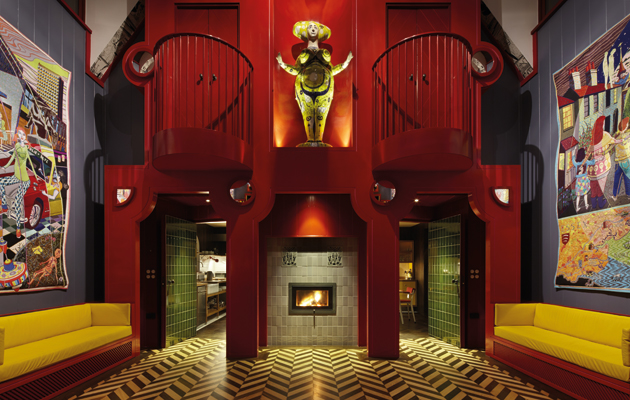|
|
||
|
A mash-up of architecture debate and comedy panel show proved a refreshing format, though the audience was slow to get in the spirit, reports Peter Smisek from one of a series of events taking place in London What do you do when a high-powered architecture panel politely agrees to disagree? Or worse yet, when your speakers are all, in fact, old friends who, despite their obvious differences, eventually end up nodding in deferential agreement? According to the organisers of Turncoats, a series of debates taking place across London until the end of this month, the trick to provoking a true argument is to force both speakers and audience to lose their inhibitions – as they would on a post-crit Friday night (a reality mostly in the imagination of this reporter, who was actually a terrible stick-in-the-mud during his student days). Organised by two bright young things of the London architecture scene, Maria Smith and Phineas Harper, with the support of the Cass School of Art and Architecture, Turncoats looks to debate some of the fundamental questions facing architecture and the profession in an atypically salt-of-the-earth way. They’ve already conducted four out of six planned debates: Quit Architecture Now, The Consultation Con, Vanity Publishing and the latest – which I attended on behalf of Icon – Ornament is Crime is Crime. It would be unfair not to point out the novelty and the highly ritualistic nature of the proceedings, all of which sets the tone. To keep anyone from making incriminating recordings, the attendees’ mobile phones were sealed in opaque plastic bags. Other emboldening measures included free beer (donations welcome, though) and a mandatory shot of vodka – this “shot in the dark” took place as the stage lights were dimmed for the start of the debate. A short musical comedy skit – sadly not performed by the speakers – added to the atmosphere. The ensuing debate, moderated by Charles Holland of FAT fame, followed the time-honoured format. The pro-ornament team – immediately dubbed “perverts and degenerates” by Holland (echoing Adolf Loos’s seminal 1908 essay, Ornament and Crime) – comprised Bertie Brandes, co-founder of fashion magazine Mushpit, and Adam Nathaniel Furman, founder of the Postmodern Society. Opposing them were the “hairshirt whisperers”: Jane Hall of Assemble and Rory Hyde, architecture curator at the V&A. The arguments were well-rehearsed and unsurprising: accusations of minimalism being classist and an acquired taste and the exaltation of ornament as the ultimate form of self-expression were countered by allegations that ornament distracts from poor craftsmanship and neglect of the pubic realm and examples of dictators’ opulent, palatial homes (except that of Mussolini, who apparently loved minimalism). Ultimately, the odds were stacked against the hairshirt whisperers, as the discussion descended into an argument about interior decoration and whether architects should care about people putting up patterned wallpaper in their flats. To his credit, Holland, despite Hyde’s accusation of intrinsic bias, proved a competent moderator. Brandes, a fashion journalist, was eloquent in her speech, comparing expensive architectural minimalism to normcore – “the biggest joke in fashion in 2015”, but as the debate devolved into architectural jargon and in-jokes, she admitted she wasn’t able to keep up. At the end, the participants had their roles reversed (hence the name of the series): while Hall gave a cautious and balanced endorsement to ornament, Furman’s closing statement was essentially an insincere satire of his opponents’ arguments (what else can you expect from a postmodernist). All in all, the event was great fun, and the mash up of an architectural debate and a comedy panel worked surprisingly well. The audience was evidently less keen to participate – their questions were a little too serious. This, I suspect, had to do with the both topic and the direction the talk took: nobody felt they had a right to instruct their neighbours on matters of personal taste. Not a revolutionary conclusion and not necessarily directly addressing Loos’s concerns all those years ago, but at least it was entertaining. The next two debates – The Gender Agenda and Toss Posh Tosh – may provoke more polarised and controversial debates, but hopefully ones that are still funny. Ornament is Crime is Crime took place on 27 January. Visit turncoats.uk for information about future debates |
Words Peter Smisek
Above: Charles Holland’s practice FAT worked with artist Grayson Perry on A House For Essex |
|
|
||


















